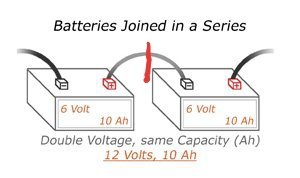Thanks everyone for the replies. I wrote the initial post on my phone, which is difficult, and so I kept it short and didn't give a full explanation. I pulled out my laptop, so let me elaborate a little more. I am installing an actual switch, so I can quickly disconnect the batteries. My main question was just to make sure that disconnecting that one cable with a switch truly broke the circuit.
I definitely know why you want to disconnect the negative first when removing battery, and at least during the initial install, I'd have to have at least one connection that is dangerous and not ideal.
My main purpose was just to make sure that breaking the link at that point would adequately disconnect the batteries from load, as I had read installing a switch on the positive side still allows a load, which makes no sense to me (hence why I stated I didn't understand why you have to switch the neutral always), that was also in regards to a single battery, so I wasn't sure how that affected a 6v series like I have.
The reason for me switching the "jumper" (not sure if that's accurate terminology) instead of the neutral is simply because of how my battery compartment is set up, I would have to modify my battery compartment to make it work. However - I've decided I'm just going to do that modification anyways, and have it all set up correctly. As it is, I always have to disconnect one live wire to take one of the batteries out, and then disconnect the neutral with the battery halfway out of the compartment. Its an older 5th wheel, and less than ideal set up, so I'll just take the time and set it up correctly.

